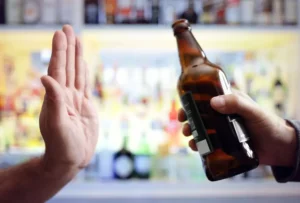SAMHSA Releases New Data on Recovery from Substance Use and Mental Health Problems Among Adults in the United States

Together, these studies support our finding that DMS inactivation decreases local functional connectivity but increases DMS functional connectivity with distant cortical regions. Future studies combining in-vivo electrophysiology and fMRI may provide further insights into changes in DMS-related functional connectivity changes and their role in relapse to oxycodone seeking. The front page of DrugAbuseStatistics.org features the most noteworthy drug abuse data, including overdose deaths, demographics, mental health, drug abuse treatment programs, and the cost of the War on Drugs. Recovery from an alcohol use disorder and living a sober life requires daily work and discipline; and it is ultimately about making progress and moving forward in one’s life without the negative consequences of alcohol use, not perfection.
What Is an Emotional Relapse?
It is important for individuals taking Disulfiram to understand the potential consequences of consuming alcohol while on the medication and to adhere to their prescribed treatment plan. By the 3-year follow-up, 62.4% of individuals who received help were in remission, compared to only 43.4% of individuals who did not seek help. This demonstrates the positive influence of professional assistance in achieving initial remission. To better understand the impact of treatment duration, let’s compare the rates of remission and relapse among individuals who received help versus those who did not. Unlike traditional rehabilitation or Alcoholics Anonymous (AA), Ria Health takes a practical and individual approach to treating AUD.
Alcohol Relapse: Warning Signs, Triggers and Prevention
- We also focused on individuals who had already recognized their alcohol-related problems and initiated a search for help.
- If you or someone you know is seeking treatment for alcohol addiction, it is essential to consult with a healthcare professional who can provide personalized guidance and determine the most effective approach.
- Additionally, emotional factors such as depression, anxiety, or unresolved trauma can increase vulnerability to relapse (NCBI).
- The study also compared negative affect, craving, self-efficacy, and perceived expressed emotions between the alcohol-dependent participants versus the opioid-dependent ones.
By actively involving family members in the recovery process, individuals struggling with alcohol addiction have a better chance of maintaining their sobriety and reducing the risk of relapse. The collective effort of the family can create a strong support system that promotes healing, growth, and long-term recovery. It is important for family members to educate themselves about addiction, recovery, and relapse prevention. Understanding the nature of alcohol addiction, the potential challenges faced during recovery, and the signs of relapse can empower family members to provide the necessary support and intervene when needed. Open and honest communication within the family can foster a sense of trust, encourage transparency, and promote a collaborative approach to maintaining sobriety. It’s important to note that relapse rates for alcohol addiction range between 40-60%, which is comparable to the relapse rates for other chronic diseases like asthma and hypertension (Conifer Park).
How Does Stress Lead to Risk of an Alcohol Relapse?

Desirable life events and positive experiences can also contribute to maintaining abstinence. Studies have shown that individuals who undergo at least three months of treatment for alcohol addiction have a substantially higher chance of maintaining sobriety compared to those who receive less than three months of treatment. This underscores the significance of comprehensive treatment and continued support throughout the recovery process (Conifer Park). Ultimately, by investing in research, policy initiatives, and community-based programs that focus on relapse prevention and long-term recovery support, we can create a more supportive and empowering environment for individuals struggling with addiction. Compared to individuals who obtained help, those who did not were less likely to achieve 3-year remission and subsequently were more likely to relapse. Less alcohol consumption and fewer drinking problems, more self-efficacy and less reliance on avoidance coping at baseline predicted 3-year remission; this was especially true of individuals who remitted without help.
Substance Abuse Statistics
- Next to each, add the techniques you and your therapist or support team have come up with to manage it.
- Ria Health is an innovative online alcohol addiction treatment program that can help you reduce your alcohol consumption or stop drinking altogether.
- Eddie said their research suggests more needs to be done to keep people alive while the healing process works.
- As we work to address addiction and relapse, it is crucial to prioritize comprehensive, evidence-based treatment approaches that consider the unique needs of individuals in recovery.
It works by blocking the enzyme responsible for metabolizing alcohol, leading to the buildup of a toxic substance called acetaldehyde. This buildup causes unpleasant physical symptoms such as nausea, vomiting, and flushing when alcohol is consumed. The statistics presented in this article underscore the pervasive nature of relapse among individuals recovering from addiction.
As a result, patients are able to handle stressful situations and various triggers that might cause another relapse. Behavioral therapies can also enhance the effectiveness of medications and help people remain in treatment longer. For people with addictions to drugs like stimulants or cannabis, no medications are currently available to assist in treatment, so treatment consists of behavioral therapies. Treatment should be tailored to address each patient’s drug use patterns and drug-related medical, mental, and social problems. To qualify for inpatient physical rehab, individuals must undergo a thorough assessment of their medical condition, functional status, and insurance coverage, ensuring they require intensive therapy that can only be provided in an inpatient setting.


We also conducted partial correlation and logistic regression analyses, controlling for help group, to identify independent predictors of 3-year remission and of 16-year relapse among initially remitted individuals. We used a regression-based estimation model [48] and information from baseline and completed follow-ups to impute missing values; as noted earlier, more than 90% of participants completed at least two of the four follow-ups. In earlier analyses https://ecosoberhouse.com/ based on this sample, we identified 1-year risk factors for overall 8-year non-remission [31]. Here, we focus separately on groups of individuals who achieved 3-year remission with or without help and, among these remitted individuals, examine overall predictors of 16-year relapse and potential differential predictors in the two groups. Behavioral therapies help people in drug addiction treatment modify their attitudes and behaviors related to drug use.
- Also known as opioids, narcotics include opium, opium derivatives, and synthetic versions.
- Some research has found that 40% to 60% of people dealing with substance abuse disorders relapse within a year.
- SAMHSA’s mission is to lead public health and service delivery efforts that promote mental health, prevent substance misuse, and provide treatments and supports to foster recovery while ensuring equitable access and better outcomes.
- In earlier analyses based on this sample, we identified 1-year risk factors for overall 8-year non-remission [31].
- This section provides an overview of relapse rates and explores the factors that influence relapse.
It teaches you how to overcome negative thinking, which is often at the heart of a relapse. For example, you might believe that you can’t quit, that recovery takes too much effort, and that you won’t enjoy life as much without alcohol. The Centers for Medicare & Medicaid Services (CMS) finalized expansion of Medicare coverage to include opioid treatment programs delivering MAT (medication-assisted-treatment) effective Jan. 1, 2020.
Yet, AUD’s chronic nature means that relapse may be part of your ultimate process of getting clean or moderating your alcohol intake. Research has shown that individuals with strong family support systems are more likely to maintain their sobriety and have better long-term outcomes (Conifer Park). Involving family members in the recovery process helps to address the underlying issues and dynamics that may contribute to alcohol addiction. alcohol relapse statistics In summary, the duration of alcohol addiction treatment has a significant impact on an individual’s recovery journey. Longer treatment durations, combined with comprehensive support systems, increase the likelihood of achieving remission and reducing the risk of relapse. Seeking professional help and engaging in ongoing treatment can significantly improve long-term outcomes for individuals battling alcohol addiction.
